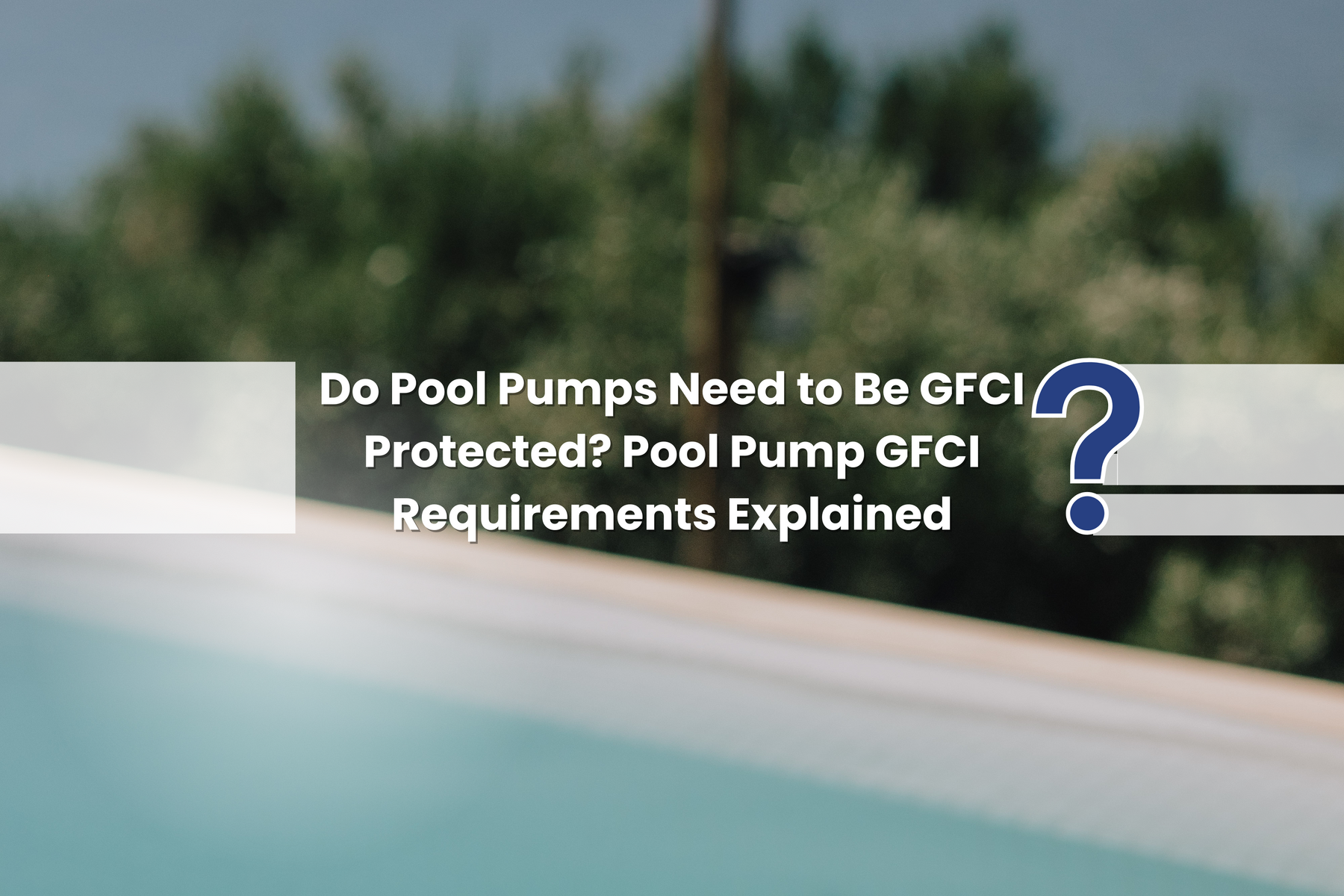
Do Pool Pumps Need to Be GFCI Protected? Pool Pump GFCI Requirements Explained
The Indispensable Role of GFCI Protection for Pool Pumps
Yes - and not just because the NEC says so. GFCI protection for pool pumps can literally be a lifesaver, cutting power the moment trouble strikes. Want to keep your pool safe, shock-free, and up to code? Stick around - we’re diving into what you need to know.
Pool pumps are powerful pieces of equipment, and they're always near water. That’s a risky combo if the right safety gear isn’t in place. A Ground Fault Circuit Interrupter (GFCI) might be small, but its job is huge. It's one of the most important tools for keeping your pool area safe.
Understanding GFCI and Its Safety Imperatives
What is a GFCI and How Does It Work?
A GFCI works like a safety switch. It keeps an eye on how electricity flows in and out of a circuit. If something’s off - like electricity escaping into water or through a person - it shuts off the power almost instantly.
This quick reaction time can stop electrical shock before it becomes dangerous. You’ve probably seen GFCIs in kitchens and bathrooms, but anywhere near water needs one, especially outdoors.
Pool pumps run strong currents and are often exposed to moisture. A GFCI helps make sure that if something goes wrong, the power doesn’t keep flowing into the problem.
Why GFCI is Crucial for Pool Safety
Water and electricity don't mix. Period.
Pool pumps sit close to splashes, rain, and high humidity. If a wire gets worn out or a motor gets wet, it only takes one spark to put someone at risk.
That’s why safety codes require protection. GFCIs step in when they sense trouble and stop power from going where it shouldn't. It’s one of the simplest, smartest ways to prevent injuries or worse.
There are too many real-life cases where people have been shocked - or worse - just trying to clean or service a pool. A working GFCI helps make sure your pool doesn’t become part of that statistic.
National Electrical Code (NEC) Requirements for Pool Pumps
Current NEC Standards (e.g., 2020 NEC and later)
The National Electrical Code (NEC) is like the rulebook electricians follow. Every few years, it gets updated to reflect new safety standards.
Starting with the 2020 NEC update, all pool pump motors must be connected to a GFCI-protected circuit. This rule applies to both hardwired pumps and those that plug into an outlet.
Even if your pool setup is older, you may still be required to upgrade the wiring when replacing parts or making changes. The newer code helps prevent accidents with modern equipment.
GFCI for New Installations vs. Replacement Pumps
If you're installing a brand new pool pump, it has to be GFCI protected - no exceptions. That’s been the standard for a while now.
But even if you’re just swapping out an old one, the same rules apply. Once you're making electrical changes, everything needs to meet current code.
Think of it like this: if you’re replacing the brakes on your car, you’re not going to install outdated parts just because that’s what it used to have. Same logic here.
And if you're unsure what you need, it’s always smart to check with a licensed electrician or your local building authority.
Specific Code Sections (e.g., 680.21(C) & (D))
Let’s get into the details, for the folks who like to see the receipts:
-
NEC 680.21(C) requires that all outlets powering pool pump motors be GFCI protected.
-
NEC 680.21(D) covers cord-and-plug-connected pumps and says they also need GFCI protection.
These are clear, specific rules. And they exist for one reason - to keep people safe. Following them isn’t just about passing inspection. It’s about protecting lives.
Addressing Common GFCI Issues with Pool Pumps
What Causes GFCI Tripping?
If your GFCI keeps tripping, it’s not doing it for fun. Something’s up.
Here are the most common reasons:
-
Moisture inside the pump motor or wiring box
-
Frayed or cracked wires
-
Improperly grounded circuits
-
Dirt, insects, or debris inside the outlet or breaker box
-
A faulty pump motor or a GFCI device that needs replacing
Sometimes, you can spot the problem right away. Other times, it takes a bit of trial and error. Either way, it's worth checking out before resetting the GFCI over and over again.
Troubleshooting Nuisance Tripping
Nuisance tripping is what happens when the GFCI trips without any clear danger.
Here’s what you can do:
-
Unplug the pump and check for signs of moisture or corrosion.
-
Dry everything completely, especially if it rained recently or the pump got splashed.
-
Plug the pump into a different GFCI outlet to test if the outlet or the pump is the problem.
-
Test your GFCI breaker using the built-in "test" and "reset" buttons.
-
If it keeps happening, call an electrician. Don’t take chances with electricity near water.
Whatever you do, don’t disable or bypass the GFCI. That’s not fixing the problem - that’s removing your safety net.
Keeping your pool pump protected with a GFCI isn’t just about checking off a code requirement. It’s about making sure everyone who dips their toes in the water stays safe.
Got a new pool pump or planning to upgrade? Check out the Pentair IntelliFlo 3 VSF Pool Pump, a top-rated, GFCI-ready pump. Make sure you're not just buying the right pump - but powering it the safe way too.
Related reading:
- Discover the Most Energy Efficient Pool Pumps: Save Energy Without Sacrificing Performance
-
Do Pool Pumps Need to Be GFCI Protected? Pool Pump GFCI Requirements Explained
-
Are Pool Pumps 110 or 220 V? What You Need to Know Before Plugging In
-
What Are Pool Pumps Used For? A Guide to Their Role and Types
-
Common Problems with Pool Pumps and How to Fix Them



Leave a comment